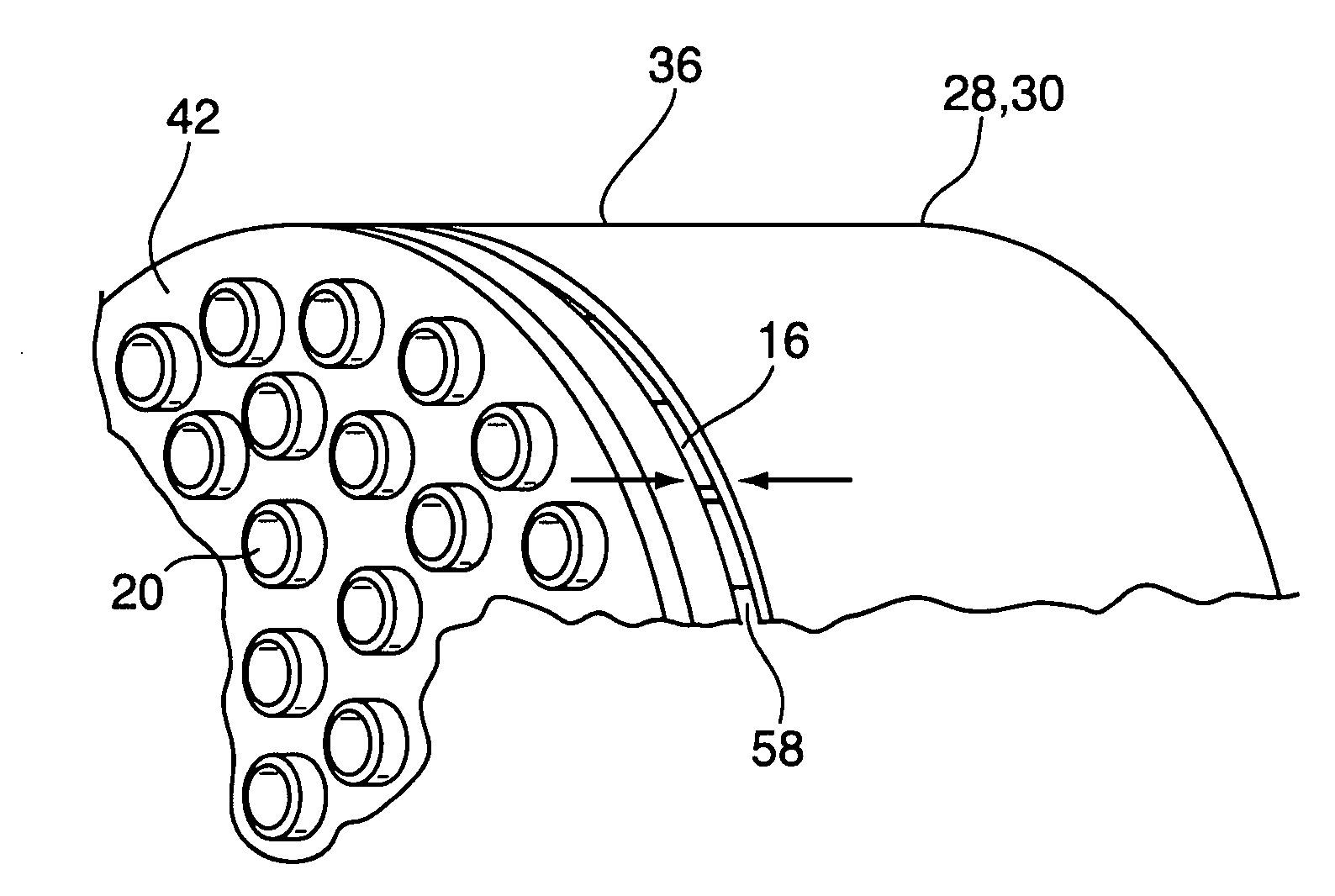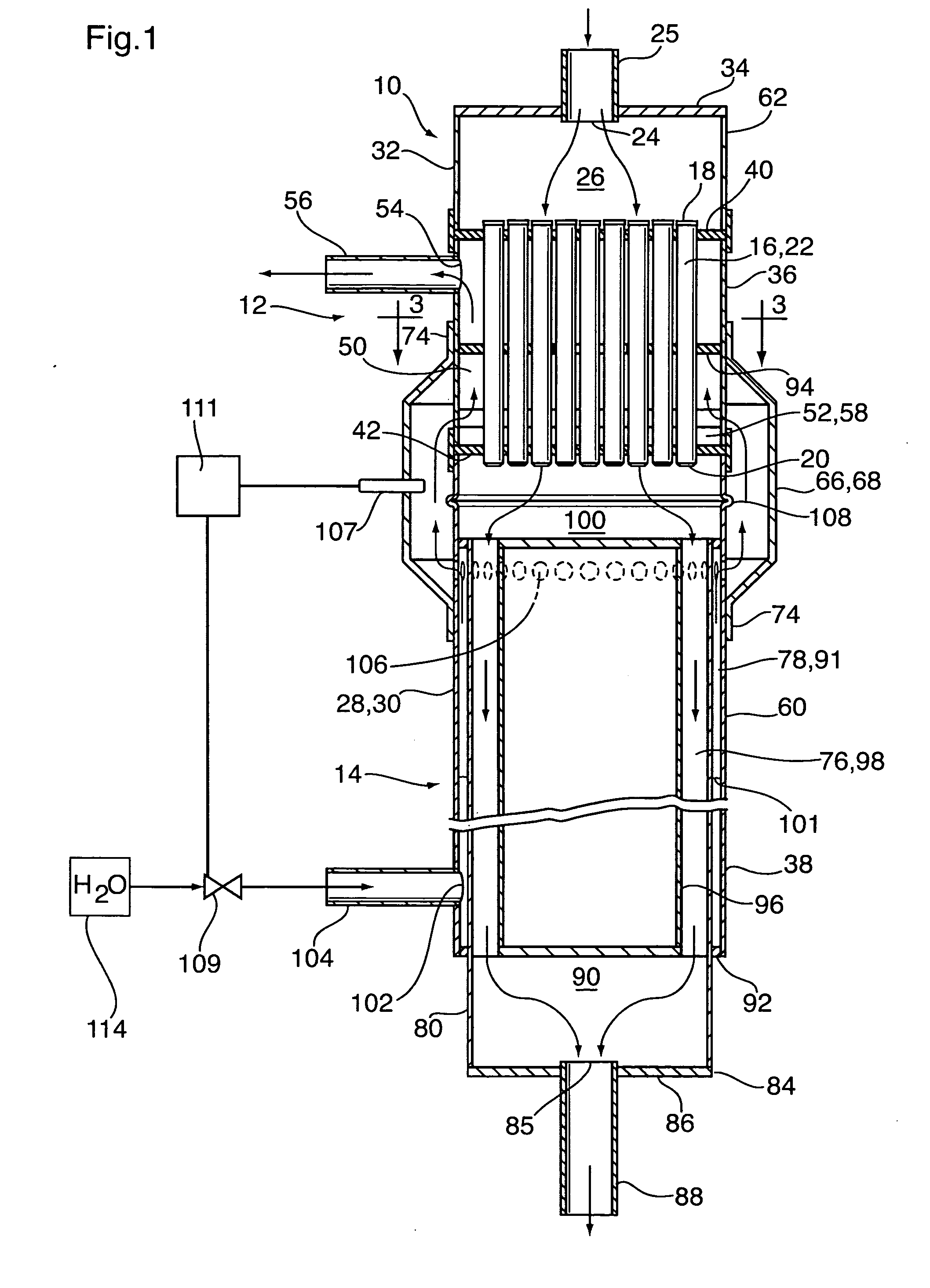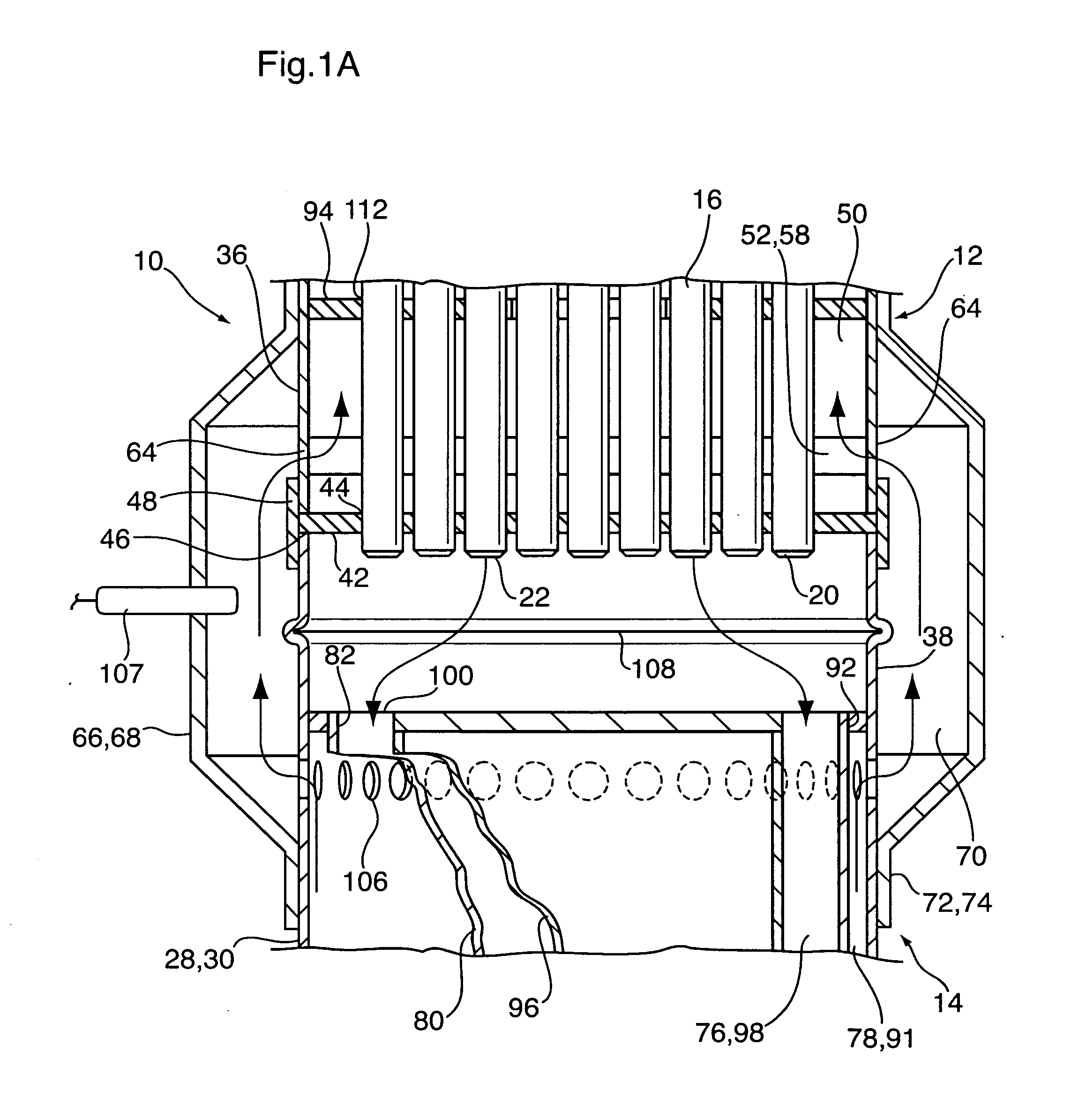Heat Exchangers with Floating Headers
a technology of heat exchangers and headers, which is applied in the field of heat exchangers, can solve the problems of premature failure of joints and/or heat exchanger components, stress in the joints between the various components and in the components, and potentially damaging stress on the tube to header joints, tubes, headers,
- Summary
- Abstract
- Description
- Claims
- Application Information
AI Technical Summary
Benefits of technology
Problems solved by technology
Method used
Image
Examples
first embodiment
[0040]A heat exchange device 10 according to the invention is now described below with reference to FIGS. 1 to 9.
[0041]Terms such as “upstream”, “downstream”, “inlet” and “outlet” are used in the following description to assist in describing the embodiments shown in the drawings. It will be appreciated, however, that these terms are used for convenience only, and that do not restrict the directions of fluid flow through the heat exchangers described herein. Rather, it is to be understood that the direction of flow of one or both fluids flowing through the heat exchangers may be reversed, where such flow reversal is advantageous.
[0042]Heat exchange device 10 is a steam generator or combined steam generator and catalytic converter in which heat from a hot waste gas (tail gas) is used to convert liquid water to superheated steam. Steam generator 10 generally comprises two heat exchanger sections, a first heat exchanger section 12 comprising a shell and tube heat exchanger and a second ...
second embodiment
[0084]A heat exchanger 200 according to the invention is now described with reference to FIG. 10.
[0085]The heat exchanger 200 according to the second embodiment comprises a water gas shift reactor in which a hot synthesis gas (hereinafter “syn gas”) is simultaneously cooled and reduced in carbon monoxide content. The water gas shift reactor 200 may be incorporated into a fuel cell system, and may be located downstream of a syn gas generator, such as a fuel reformer, in which the syn gas is produced from a hydrocarbon fuel. The syn gas typically comprises hydrogen, water, carbon monoxide, carbon dioxide and methane. Prior to being used in a fuel cell, the syn gas must be cooled and the carbon monoxide content must be reduced. The syn gas therefore undergoes a slightly exothermic catalytic reaction in the water gas shift reactor 200, converting carbon monoxide and water to carbon dioxide and hydrogen. One or more water gas shift reactors 200 may be required to reduce the carbon monoxi...
PUM
 Login to View More
Login to View More Abstract
Description
Claims
Application Information
 Login to View More
Login to View More - R&D
- Intellectual Property
- Life Sciences
- Materials
- Tech Scout
- Unparalleled Data Quality
- Higher Quality Content
- 60% Fewer Hallucinations
Browse by: Latest US Patents, China's latest patents, Technical Efficacy Thesaurus, Application Domain, Technology Topic, Popular Technical Reports.
© 2025 PatSnap. All rights reserved.Legal|Privacy policy|Modern Slavery Act Transparency Statement|Sitemap|About US| Contact US: help@patsnap.com



